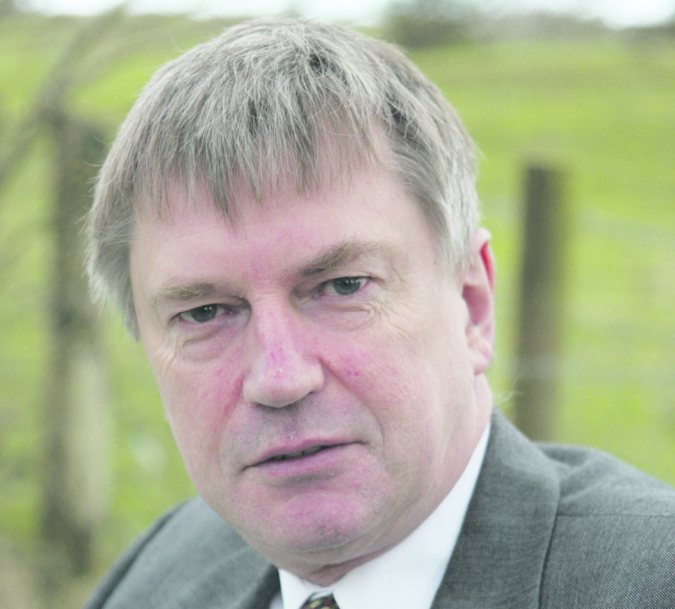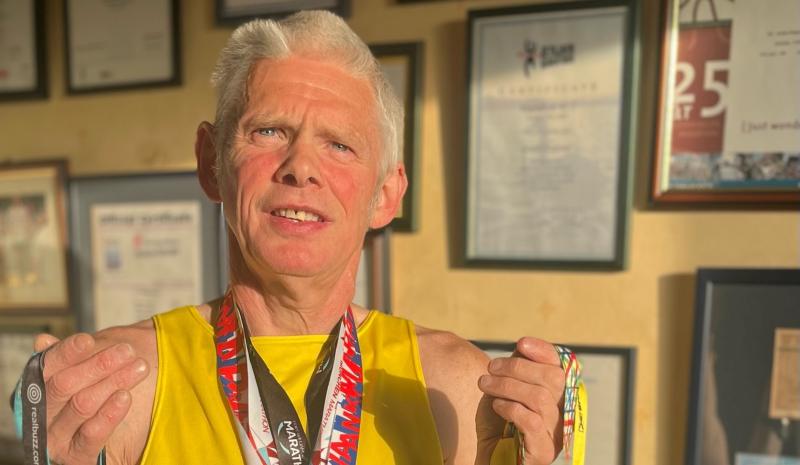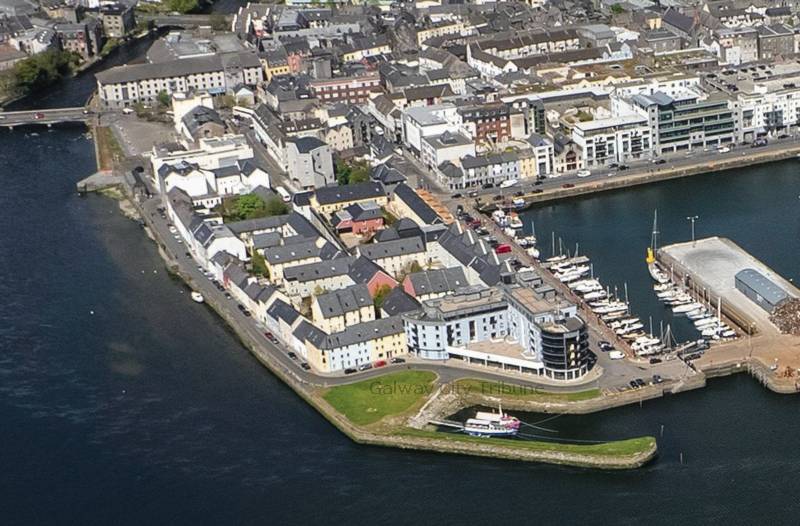News
Family angry at shortage of ward nurses at UHG

The family of an 84 year old woman, who died from a head injury sustained while a patient in UHG, criticised the severe shortage of nurses available to cope with the demand.
Coroner for West Galway, Dr Ciaran MacLoughlin, agreed with the family of Kathleen (Katie) Ludden, of Ballinaboy, Clifden, that when the ward was full to capacity, with 30 people, it would be obviously difficult for staff to cope.
Mrs Ludden’s daughters, Geraldine and Ann, were forced to leave their mother’s bedside due to an outbreak of the Norovirus (Winter Vomiting Bug) in St Enda’s Ward in February last year – Geraldine said that their mother would still be alive if they had been able to stay with her and give her the one-to-one care she so desperately needed.
They claimed that their mother suffered four falls – obvious by bruises on her body – during her time in the acute medical ward, but only three were recorded.
And they disputed claims that they were informed after each of these falls – one of which caused a bleed in her brain.
“We were informed of two falls – she would not have been left there if we had been told (about the others),” Geraldine Ludden said.
The family also said that their mother should have been restrained, as she was at risk of falling, but were told that there was strict protocol in this regard.
Mrs Ludden was initially admitted to UHG on February 7 last year, with a long-standing cough. She had a history of battling oesophageal cancer, but the post- mortem examination showed that her past medical complications had not actually caused her death.
Helen Hanrahan, assistant director of nursing, told the inquiry that during the daytime there were seven nurses available to care for a total of 30 patients – at night-time that number dropped to between three and four.
In this particular ward, there are 13 beds in the ‘long ward’, eight in another, and more in single rooms.
Geraldine Ludden said that in all the time she had spent with her mother, in the two weeks before her death, she never saw the full complement of staff on duty.
“I’ve seen patients left there who were not given food, no one cared – that’s why I stayed with her,” she said.
“Then I was put out (due to the virus), and brought back when she was dying. It was not just my mother, it was every other patient – I’m sorry they didn’t have anyone looking after them.
“When she was moved to the private ward, no one came to her. We did the full nursing, the nurses only came in to take her blood pressure, unless we specifically asked.”
Ms Hanrahan, who was not personally involved in Mrs Ludden’s care, said that she was sorry that her family felt that their mother did not get the care she needed.
She said that St Enda’s Ward, being an acute ward, had never been without the full complement of staff during the recent embargo. And, she advised the Coroner that a national task force was currently examining the staff-patient ratio in Irish hospitals.
Dr MacLoughlin remarked that this was an issue that was not going to diminish, referring to an earlier witness, Dr Anthony O’Regan, a consultant in respiratory medicine. He had said that there was a huge proportion of elderly patients over the age of 80 occupying beds in Irish hospitals.
“There will be ‘end of life’ issues for a lot of these people, because of their age,” the Coroner said.
“Safety with falls is a huge issue, and for one person (nurse) to look after eight people is a lot. Four staff for 30 patients seems a lot.”
Mrs Ludden died on February 20 last year, two weeks after her admission. In the subsequent post mortem examination, carried out by Dr Birgids Tietz, she found that the tumour had been successfully treated, and that the cause of death was her last fall.
Dr MacLoughlin returned a verdict in accordance with the medical evidence that Mrs Ludden died from cardio respiratory failure due to an intracranial haemorrhage due to an accidental fall. He added that while there were existing comorbidities when she was admitted to hospital, these did not cause her death.
“I’d like to make this observation – that in a ward where there are a number of people acutely ill, the authorities may look at staffing numbers, and see if it is sufficient to meet the needs of the patients,” he said.
“It is important that we all know there are protocols to restrain people’s freedom. It is taken very seriously, and can be the subject of disciplinary proceedings. I wouldn’t like to see myself restrained if I didn’t feel it necessary.
“In hindsight, people do fall, maybe if they were restrained they wouldn’t have fallen, but how would a patient have felt if they were restrained against their will, if they were compos mentis. There is no doubt you have to take into account the patient’s wishes in a hospital environment.”
He expressed his sincere sympathies to Mrs Ludden’s family on the tragic circumstances of her unexpected and sudden death.
Connacht Tribune
West has lower cancer survival rates than rest

Significant state investment is required to address ‘shocking’ inequalities that leave cancer patients in the West at greater risk of succumbing to the disease.
A meeting of Regional Health Forum West heard that survival rates for breast, lung and colorectal cancers than the national average, and with the most deprived quintile of the population, the West’s residents faced poorer outcomes from a cancer diagnosis.
For breast cancer patients, the five-year survival rate was 80% in the West versus 85% nationally; for lung cancer patients it was 16.7% in the west against a 19.5% national survival rate; and in the West’s colorectal cancer patients, there was a 62.6% survival rate where the national average was 63.1%.
These startling statistics were provided in answer to a question from Ballinasloe-based Cllr Evelyn Parsons (Ind) who said it was yet another reminder that cancer treatment infrastructure in the West was in dire need of improvement.
“The situation is pretty stark. In the Western Regional Health Forum area, we have the highest incidence of deprivation and the highest health inequalities because of that – we have the highest incidences of cancer nationally because of that,” said Cllr Parsons, who is also a general practitioner.
In details provided by CEO of Saolta Health Care Group, which operates Galway’s hospitals, it was stated that a number of factors were impacting on patient outcomes.
Get the full story in this week’s Connacht Tribune, on sale in shops now, or you can download the digital edition from www.connachttribune.ie. You can also download our Connacht Tribune App from Apple’s App Store or get the Android Version from Google Play.
Connacht Tribune
Marathon Man plans to call a halt – but not before he hits 160 races

On the eve of completing his 150th marathon, an odyssey that has taken him across 53 countries, Loughrea’s Marathon Man has announced that he is planning to hang up his running shoes.
But not before Jarlath Fitzgerald completes another ten races, making it 160 marathons on the occasion of his 60th birthday.
“I want to draw the line in 2026. I turn 57 in October and when I reach 60 it’s the finishing line. The longer races are taking it out of me. I did 20 miles there two weeks ago and didn’t feel good. It’s getting harder,” he reveals.
“I’ve arthritis in both hips and there’s wear and tear in the knees.”
We speak as he is about to head out for a run before his shift in Supervalu Loughrea. Despite his physical complaints, he still clocks up 30 miles every second week and generally runs four days a week.
Jarlath receives injections to his left hip to keep the pain at bay while running on the road.
To give his joints a break, during the winter he runs cross country and often does a five-mile trek around Kylebrack Wood.
He is planning on running his 150th marathon in Cork on June 4, where a group of 20 made up of work colleagues, friends and running mates from Loughrea Athletics Club will join him.
Some are doing the 10k, others are doing the half marathon, but all will be there on the finishing line to cheer him on in the phenomenal achievement.
Get the full story in this week’s Connacht Tribune, on sale in shops now, or you can download the digital edition from www.connachttribune.ie. You can also download our Connacht Tribune App from Apple’s App Store or get the Android Version from Google Play.
CITY TRIBUNE
Galway ‘masterplan’ needed to tackle housing and transport crises

From the Galway City Tribune – An impassioned plea for a ‘masterplan’ that would guide Galway City into the future has been made in the Dáil. Galway West TD Catherine Connolly stated this week that there needed to be an all-inclusive approach with “vision and leadership” in order to build a sustainable city.
Deputy Connolly spoke at length at the crisis surrounding traffic and housing in Galway city and said that not all of the blame could be laid at the door of the local authority.
She said that her preference would be the provision of light rail as the main form of public transport, but that this would have to be driven by the government.
“I sat on the local council for 17 years and despaired at all of the solutions going down one road, metaphorically and literally. In 2005 we put Park & Ride into the development plan, but that has not been rolled out. A 2016 transport strategy was outdated at the time and still has not been updated.
“Due to the housing crisis in the city, a task force was set up in 2019. Not a single report or analysis has been published on the cause of the crisis,” added Deputy Connolly.
She then referred to a report from the Land Development Agency (LDA) that identified lands suitable for the provision of housing. But she said that two-thirds of these had significant problems and a large portion was in Merlin Park University Hospital which, she said, would never have housing built on it.
In response, Minister Simon Harris spoke of the continuing job investment in the city and also in higher education, which is his portfolio.
But turning his attention to traffic congestion, he accepted that there were “real issues” when it came to transport, mobility and accessibility around Galway.
“We share the view that we need a Park & Ride facility and I understand there are also Bus Connects plans.
“I also suggest that the City Council reflect on her comments. I am proud to be in a Government that is providing unparalleled levels of investment to local authorities and unparalleled opportunities for local authorities to draw down,” he said.
Then Minister Harris referred to the controversial Galway City Outer Ring Road which he said was “struck down by An Bord Pleanála”, despite a lot of energy having been put into that project.
However, Deputy Connolly picked up on this and pointed out that An Bord Pleanála did not say ‘No’ to the ring road.
“The High Court said ‘No’ to the ring road because An Bord Pleanála acknowledged it failed utterly to consider climate change and our climate change obligations.
“That tells us something about An Bord Pleanála and the management that submitted such a plan.”
In the end, Minister Harris agreed that there needed to be a masterplan for Galway City.
“I suggest it is for the local authority to come up with a vision and then work with the Government to try to fund and implement that.”












